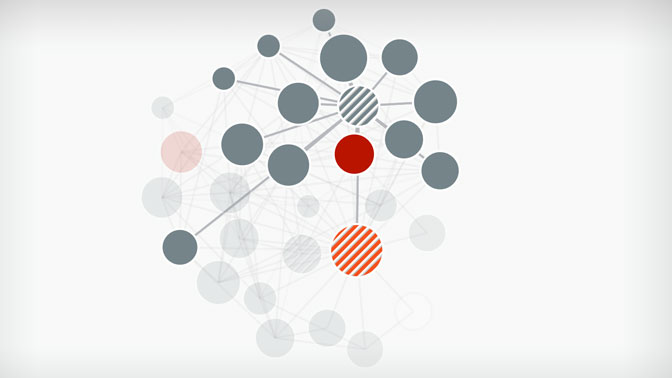
To help the research community stay on top of the latest COVID-19 research, Dr. Bo Wang, lead AI scientist at the Peter Munk Cardiac Centre and Scientist at the Techna Institute, released a new tool for exploring scientific literature.
The tool, called CiteNet, is a search engine that uses natural language processing—a type of artificial intelligence algorithm—to find relevant scholarly publications.
“CiteNet is different from traditional search engines because it uses key papers to search for related scientific literature, rather than keywords,” says Duncan Forster, one of the developers of the tool.
“Instead of finding a ‘needle in a haystack’, which is the approach of traditional search engines, CiteNet is designed primarily for researchers who want to explore the literature around a topic without a specific question in mind,” explains Dr. Wang.
For example, if you want to learn about the scientific dialogue around COVID-19 transmission and know of an article on the topic, starting the search with that article will lead you to the latest relevant works on the topic.
Here are the key points to keep in mind when using CiteNet to explore the latest research:
- Publications are the starting point for searches in CiteNet. If you are looking for a specific article to start the search, the closer your query is to the article’s title and/or list of authors, the easier it is to find the article.
- CiteNet indexes all publications from the pre-print databases bioRxiv and medRxiv, pointing you to the latest literature—before they are peer-reviewed and published.
- CiteNet also indexes publications from PubMed and uses article abstracts to determine the semantic similarity (ie, the similarity in content) between them.
- New publications are added every day.
- CiteNet offers a network view of its search results. For pre-print publications, the connections between publications are based on their semantic similarity. For published articles from Pubmed, the connections between publications are based on either citations or semantic similarity.
The team is working on linking the pre-print articles to published articles and improving the accuracy and relevance of the searches.
“Currently we are focusing on bioRxiv and medRxiv to help researchers keep up to date with the latest COVID-19 research,” says Dr. Wang. “In the future, we would like to index everything that's available and explore more ways for CiteNet to help solve research problems.”
A video tutorial for CiteNet is available here.

The network view in CiteNet offers a visual tool to refine literature searches. Red circles help mark articles that have already been read. Hatched circles mark articles that have been added to the search query.




